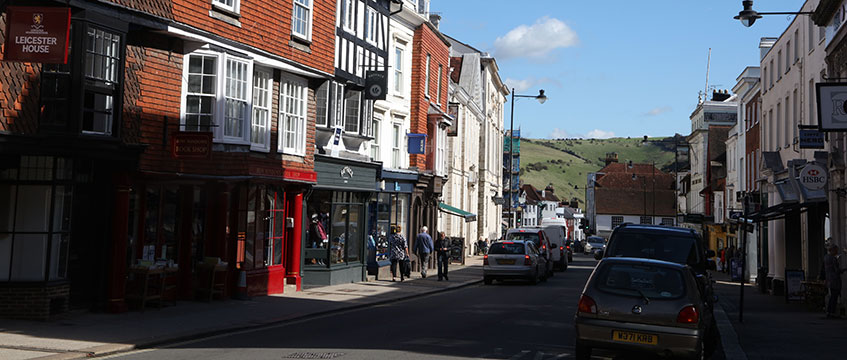 Reading the news recently you could be forgiven for thinking that the British high street is dying. The retail sector and shops in particular are changing, but dying? I’m not sure I agree, writes Ben Hodge.
Reading the news recently you could be forgiven for thinking that the British high street is dying. The retail sector and shops in particular are changing, but dying? I’m not sure I agree, writes Ben Hodge.
In 2017 we sold high street assets totalling £420m, equating to 69% of the total sum raised, in our recent February auction it comprised 80%. So, would it be fairer to say there is a dislocation between the headlines and the behaviour of the entrepreneurial investors buying income at auction?
Looking closely at the initial yields achieved for differing qualities of retail in the recent past gives us a good insight into the amount of risk investors assign to these investments. Our recent February auction produced a strong result for the sector. Grade-A retail, by which I mean well-located shops, let to a good covenant and with a reasonable unexpired lease term (10-plus years) recorded an average NIY of 5.4%.
By contrast, the less well located, less established or financially credible tenant with a more modest unexpired lease term of five years or less, grade-B retail, recorded an average NIY 7.9%. This difference in achieved yield, 2.5% (or 47%) in February is important, it’s the price of the risk premium.
Complete picture
Of course, February’s totals alone will not provide a complete picture, so let’s look at our results from the past 10 years. Between 2008 and 2017 the differential between grade-A and grade-B retail investments has averaged 33%. In 2017 this gap moved out to 43% and in February was 47%.
Is this movement indicating that grade-A retail investments are strengthening? Indeed, grade-A retail yields in February were at 5.4%, ahead of the 10-year grade-A average yield of 5.9%.
At the same time, grade-B yields have, contrary to what you might think, remained relatively steady at 7.9% in February, compared to a 10-year average yield of 8%.
With such positive results achieved now, what about future demand? In data obtained from February’s Allsop Buyers Survey we can see that continued demand from investors is strong. Some 93% of buyers told us that they would like to buy again at auction over the next 12 months. This figure is well ahead of the 82% recorded throughout 2017.
The outlined data makes a compelling case and suggests it is worth looking past the headlines and digging a little deeper. If you do so, you will see that the market is not softening as implied. Instead, investor appetite is strengthening and is focussed on the higher quality or rarer assets.
These high-value investments, often with better tenants, better pitches and longer unexpired lease lengths are seeing a growth in demand. And it is this reinforced focus that is driving demand for grade-A stock in the room.
Lot 6 from our February auction clearly demonstrates this. A high street shop in Lewes, East Sussex, it is let to Bank of Scotland until 2031. The tenant’s national presence is attractive to investors, as is the length of the lease.
Good quality assets
As a result, the asset generated good interest and sold in the room for £1.22m (NIY 4.80%), ahead of the average grade-A retail yield. The result highlights the prices good quality high street assets can achieve.
My original question was whether there really is a dislocation between the headlines and the behaviour of our entrepreneurial investors, and our findings show that it is hard to conclude otherwise.
There is clearly a difference between the negative rhetoric and the strength of demand for high street assets in the auction room.
When Napoleon described us as a nation of shopkeepers he meant it as an insult; as it happens, our buyers like and understand shops, they know a good shopkeeper from a bad one, and are still very happy to back retail assets with their own cash.
Ben Hodge, senior surveyor, commercial auctions, Allsop











